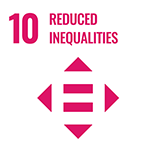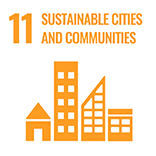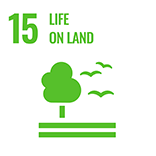Climate smart actions and strategies in north western Himalayan region for sustainable livelihoods of agriculture-dependent hill communities

Summary
This project has the aim to improve the adaptive capacity of rural small and marginal farmers, including hill women in the Himalayan region of Uttarakhand, India, to respond to climate change by introducing a combination of Climate Smart Farming Technologies along with required social engineering and capacity building processes.
The implementation of this solution in Champawat district, in the state of Uttarakhand, is part of one of six small-scale adaptation projects financed by the Adaptation Fund in India, aimed at combating climate change and its associated challenges. It includes the implementation of different measures in 10 vulnerable villages in the district, which is characterized by the presence of mountain ranges, large valleys, and rivers, and whose population is primarily engaged in agriculture. According to previous observations, this region faces numerous climatic and social challenges, such as water stress, extreme weather events, habitat loss, and land degradation, acute poverty, isolation, discrimination against women and lack of technical knowledge.
The project has been tailored to local needs. It focuses on diversifying production systems and improving institutional capacities to adopt climate-smart technologies and practices as a means of reducing people’s vulnerability, while simultaneously building field evidence of climate-resilient strategies and approaches for subsequent replication or upscaling. Throughout the project implementation period, special attention has been given to ensuring the benefit of women and other poor and marginalized groups.
The project is composed of three main components:
Component 1: Community Mobilization and Organization.
Component 2: Introduction of Water Resource Development and Climate Smart Farming Technology.
Component 3: Knowledge Management including Knowledge Creation and Wider Dissemination Actions.
Overview
- Location:
- Implementation sites:
-
- Single country
- Single location
- Mountain region:
-
Himalayas
- Province:
-
- Uttarakhand state
- Site locations:
-
Champawat district
- Solution scale:
- Ecosystem type(s):
- Solution type(s):
- Sector(s):
- Climate impact(s) addressed:
- Other climate impact(s) addressed:
-
- water scarcity
- Climate impact time-scale(s):
- Main benefit associated with the solution:
- Co-benefit(s) associated with the solution implementation:
- Implementation timeline:
-
- 2016 - 2021
Solution details
Main beneficiaries & outcomes
The beneficiaries of the project’s results include close to 800 families from vulnerable groups, such as those who depend exclusively on the agricultural and livestock sectors. Five principal outcomes are pursued:
- Improved community mobilization to collectively plan and undertake climate change adaptation.
- Building resilience through increased water availability and efficient water use in hill regions.
- Adoption of climate smart agriculture technologies and farm diversification options for climate resilient livelihoods.
- Improved potential of livestock resources as an option for livelihood stabilization in hills.
- Knowledge generation based on field actions and wider dissemination to enhance awareness of hill communities and stakeholders as well as for better policy inputs.
Increased incomes, more productive assets, better management systems, better managed natural resources, and an intervention package on climate change adaptation programs for further up-scaling or replication are some of the foreseen results. An additional focus is given to reducing the workload of local women involved in agricultural activities.
Planning and implementation
For putting into practice the project, the National Bank for Agriculture and Rural Development (Nabard) acted as the implementing agency, while the BAIF Development Research Foundation is in charge of execution. Other relevant actors include the AFB- NABARD – MOEFCC (Ministry of Environment, Forests and Climate Change, Government of India), community-based organizations and people’s collectives, and local communities from the project villages.
During the initial phase of the project, regular field visits and village level meetings were conducted in the implementation areas with the intention of disseminating information on the project background, scope, type of interventions, key activities, type of solutions, vulnerable groups to be focused on, selection criteria for participants, etc. Subsequently, baseline surveys were also organized to assess vulnerability levels and learn about existing coping strategies in place. Using CRiSTAL and Participatory Rural Appraisal (PRA) tools, detailed assessment reports were prepared. As the first activity of the project, a lunch workshop was organized on November 16, 2016.
Finance
The project is financed by the Adaptation Fund in the form of a grant.
|
Project Component 1: Community Mobilization and Organization |
US$ 68,133 |
|
Project Component 2: Introduction of Water Resource Development and Climate Smart Farming Technology |
US$ 731,575 |
|
Project Component 3: Knowledge Management including Knowledge Creation and Wider Dissemination Actions |
US$ 16,667 |
|
Project execution cost |
US$ 76,595 |
|
Total Project Cost |
US$ 893,970 |
|
Implementing Entity Project Cycle Management Fee |
US$ 75,600 |
|
Grant Amount |
US$ 969,570 |
A cost-benefit analysis was performed for the project in order to compare the application of the proposed innovative techniques (e.g. natural spring rejuvenation, rain water harvesting, fruit tree plantation, etc.) and activities with the available alternatives. Results demonstrated the viability of the planned measures.
Innovation
Innovation is an important feature of the proposed interventions and techniques as this has been identified as highly cost-effective when compared to other available alternatives. Innovative climate-smart farming practices and new approaches, including the introduction of a combination of horticulture, crop diversification and soil and water conservation, have been included in the measures implemented. In addition, other innovative techniques for fodder and feed preparation are being promoted.
Performance evaluation
The overall performance of this solution is planned to be assessed in a final evaluation to be carried out by an external consultant, as well as through a final environmental and social assessment under the responsibility of the executing agency. However, no further information is yet available.
Progress reports including the status of implementation of environmental and social measures are to be prepared and disseminated through the implementation phase of the project, and field monitoring would be carried out every six months.
Long term project sustainability and maintenance
The sustainability of all project interventions during and after implementation has been carefully considered in their design. In particular, the strengthening of Community Based Organizations (CBOs) through different types of training and exposure visits is regarded as of utmost importance and is expected to support long-term continuity of solutions.
The following three types of sustainability efforts have been envisaged:
- Economic sustainability of important project activities for livestock through scientific management and breeding improvement, vegetable cultivation in bamboo structures and fruit tree plantations.
- Ecological sustainability is ensured by focusing on the regeneration of natural resources such as groundwater and degraded grazing land.
Institutional sustainability is ensured by emphasizing capacity building of local groups and ensuring collective actions through them, even after project completion.
Capacities for design and implementation
Knowledge
Because the lack of technical knowledge among farmers and because the progressive degradation of traditional knowledge was initially identified as an added factor contributing to the vulnerability of the communities, knowledge generation and dissemination is an important aspect of this solution and has been integrated into the project as one of the five main components. Component 3 thus seeks knowledge generation through field-based actions and wider awareness-raising efforts for hill communities and stakeholders.
Moreover, the project also aims to combine local knowledge with scientific technology, and the launching workshop has been useful to create knowledge partnerships and convergence with relevant institutions and stakeholders for strategic research collaboration, applied field research and capacity building. In this case, and for the advantage of the project, BAIF is recognized for its large experience in networking and drawing on the knowledge and expertise of others to help provide sustainable development solutions for poor hills communities.
Technology
The introduction of sustainable and climate-smart technologies in the project communities is one of the proposed strategies to help achieve climate-resilient livelihoods. Therefore, linkages and partnerships have been established with relevant technical and scientific institutes in the region for the necessary technology transfer, demonstrations and support.
Political / Legal
The Government of India has shown clear support and interest in the implementation of this project. In addition to the National Bank for Agriculture and Rural Development (NABARD), which is the implementing agency, other government departments are among the key players in the design and implementation of the solution. They play an important role in developing the response required by farmers to mitigate or adapt to climate change. For example, they have identified many programs and plans through their relevant departments with which the project can collaborate to improve the resilience of hill communities.
Moreover, the project activities are also aligned with various national and regional policy objectives and frameworks, such as the National Mission for Sustaining Himalayan Ecosystem, National Mission on Strategic Knowledge on Climate Change, the Disaster Risk Management Act, poverty reduction plans, and India’s commitment to the UN Millennium Development Goals, the Kyoto Protocol, and others.
Institutional
The collaboration between project stakeholders and different actors, including scientists and government officials, is very important in this project. This helps to enable the implementation and sustainability of the measures, and to carry out innovative research to identify various techniques, products and services. Networking and partnerships were stablished with key institutes of the Indian Council for Agriculture Research working on hill or Himalayan issues, governmental departments, technical institutes involved in animal husbandry, agriculture and rural development, bilateral and multilateral funding agencies and programs (e.g. IHCAP, HICAP and ICIMOD), as well as with community based organizations and likeminded NGOs.
A Technical Advisory Team composed by Krishi Vigyan Kendra (KVK), GB Pantnagar University, Himalayan Environmental Studies and Conservation Organization (HESCO), and the Livestock Development Team of BAIF was stablished.
Socio-cultural
Socio-cultural skills are central to the implementation of this solution as the overall project strategy is people-centered, process-oriented and stakeholder-based. From the early stages of the project, the local communities of the participating villages are key participants and have been involved in the different measures implemented. In the special case of women, they are considered key stakeholders.
Several of the project interventions such as drip irrigation, climate-resilient horticulture, protected crops, agrobiodiversity and recovery of traditional agricultural practices, fodder planting, etc., are implemented directly by the individual beneficiaries. And as mentioned above, the project involves an interdisciplinary team made up of different actors in the fields of agriculture, forestry, livestock, natural resource management, rural management and agribusiness.
Outlook & Scalability
Barriers and adverse effects
No information is yet available on the barriers or adverse effects encountered by the project team during the design or implementation periods. However, it is known that the project design included the development of an assessment exercise regarding access and equity of solutions with respect to marginalized and vulnerable groups during the implementation phase. This would be done through a consultative exercise with the communities, and would serve to find physical, social and economic barriers, if any.
Transformation and future outlook
The solution looks to support adaptation to climate change in the implementation areas by helping local communities reducing their vulnerability, becoming more resilient, and by giving them appropriated knowledge and skills that will be later useful for coping with climate related impacts. Moreover, this would be further supported by the creation of links with relevant agencies and institutions that have the capacity to continue their support to the communities in the future.
Potential for upscaling and replication
One of the main objectives of the project is the long-term expansion and replication of the most successful activities. To this end, awareness raising and training of villagers, village officials and relevant departments is necessary and planned. Appropriate documents describing the approach, objectives, results and future strategies will be developed to spread the lessons learned to policy makers and other stakeholders who could replicate them in other affected areas. At the same time, project activities are also expected to be mainstreamed into the existing plans of the relevant departments.











Comments
There is no content